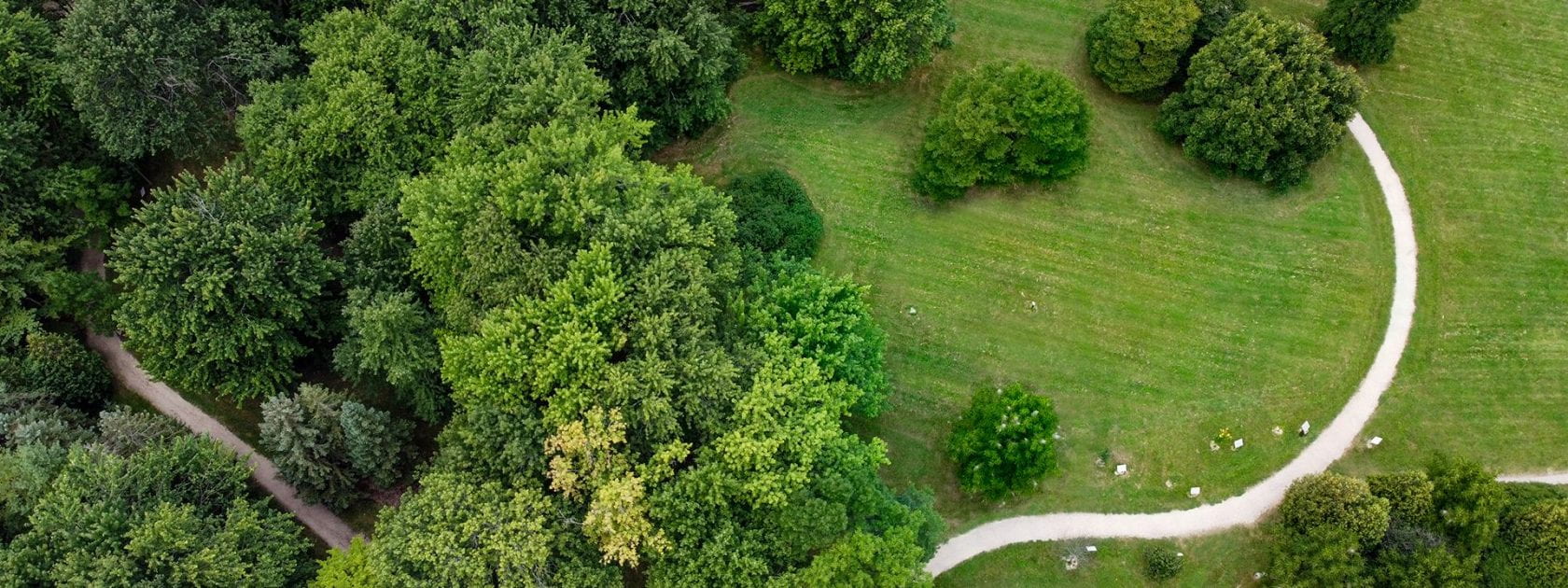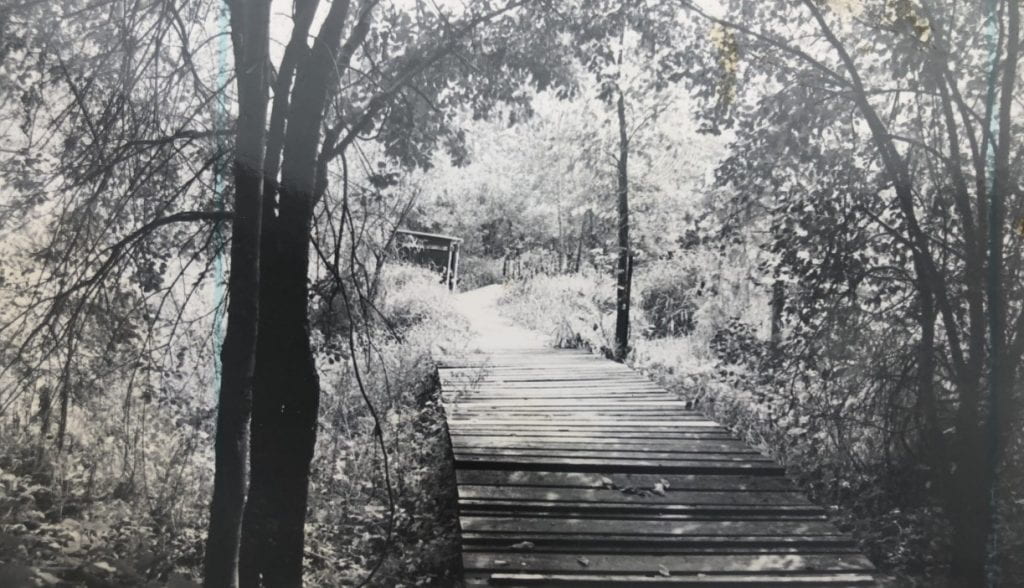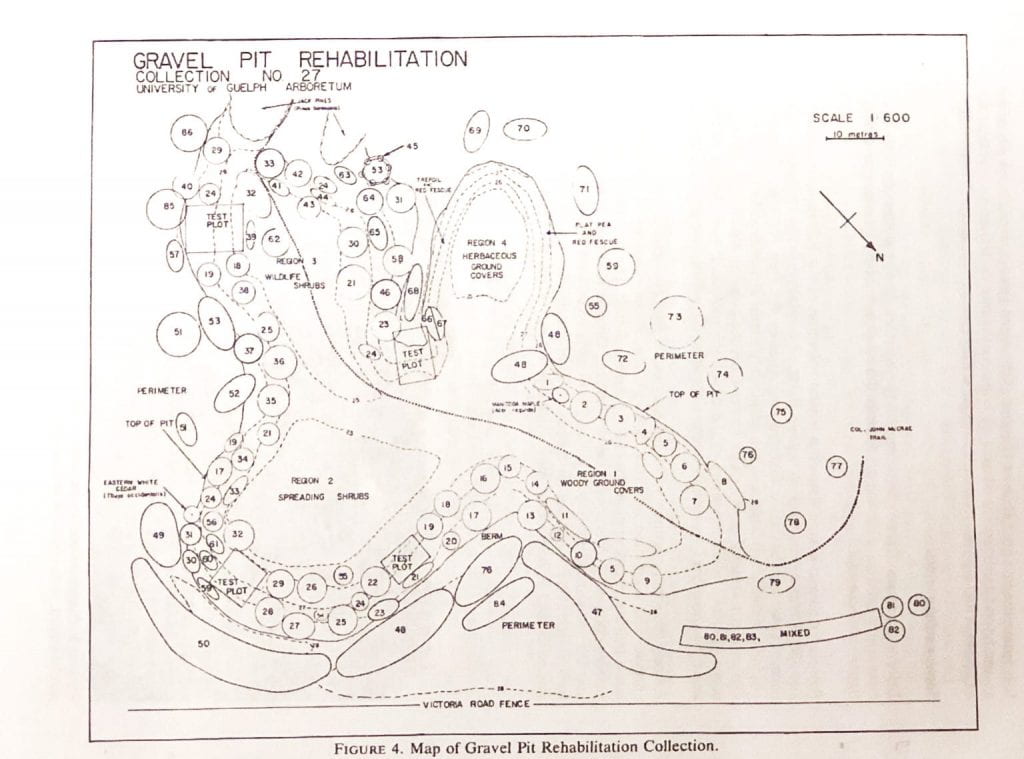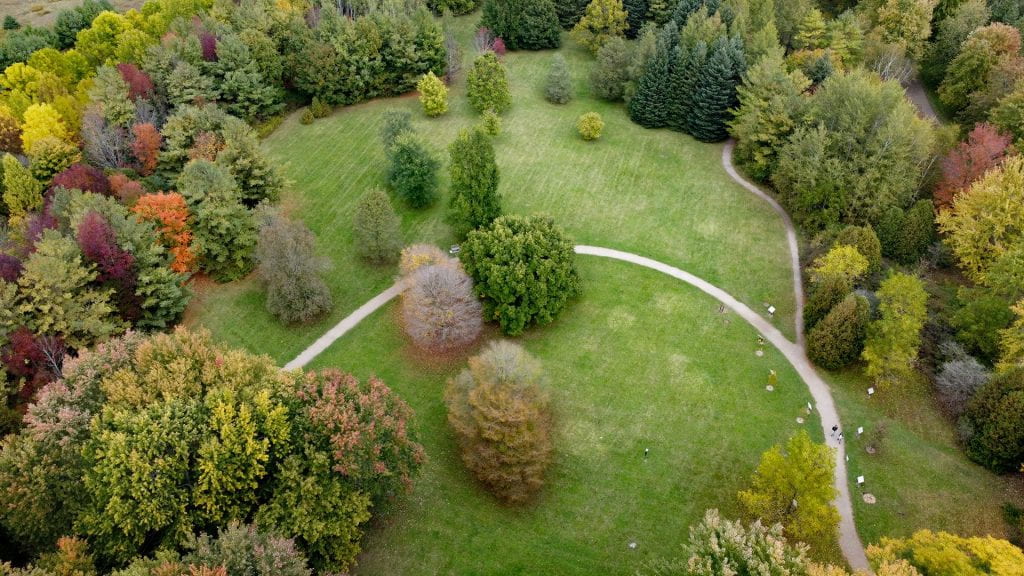Header image: Aerial view of the Wall-Custance Memorial Forest in the summer of 2020
Arboretum staff have prioritized the preservation and restoration of natural spaces since The Arboretum was first established in 1970. Because much of its 400-acres was used for agricultural purposes in the 1800s and early 1900s, Arboretum staff devoted themselves to establishing botanical plant collections and forest corridors for wildlife. These restored natural areas and the few pre-existing ones have been protected following the motto, “take nothing but pictures and leave nothing but footprints.”
Old-growth forests
The Arboretum has 3 old-growth forests on its 400-acres of land: Victoria Woods, Wild Goose Woods and the Nature Reserve. These forests are deemed old-growth forests because they have never been clear-cut.
Victoria Woods was a well-established old-growth forest when The Arboretum was first founded in 1970. Since its induction into The Arboretum, the forest has grown dramatically under its stewardship. Visitors can enjoy towering sugar maple, white ash, black cherry and beech trees while following one of the many trails through this forest.
The Nature Reserve is a 99-acre area closed to the public. This area holds a wetland and an old-growth forest comprised of hemlock and beech trees. The limited access to the Nature Reserve allows the area to survive without being as impacted by the influence of humans.
Wild Goose Woods is an old-growth forest that often becomes flooded in the spring. Many trees like Freeman’s maples (Acer rubrum x saccharinum or Acer x freemanii) have thrived in this swampy area.
Gravel pit rehabilitation project
In 1977, the rehabilitation of a 1-hectare gravel pit began under the supervision of Arboretum Research Coordinator Sarah Lowe. The gravel pit, located along the John McCrae Nature Trail, was an area of exposed sand, gravel and other remnant aggregate largely devoid of vegetation and wildlife. Lowe and other Arboretum staff wanted to restore the natural area for experimental and demonstration purposes.
The site was contoured with 4 distinct regions in the spring of 1977. Each region was set aside for a different purpose: One was to test what herbaceous plants like grass and clover would do best in poor, sandy soils and slopes; another devoted to woody ground covers; one that focused on shrubs; and, lastly, a wildlife area that was designed to attract wildlife with beneficial native plants. Among these regions were various experimental plots to test different planting methods and conditions.
The regions devoted to herbaceous and woody groundcovers were meant to model plants that could thrive in poor soils and steep slopes. Shrubs, trees, vines and many herbaceous species like grasses and clovers that are known to do well on slopes were planted in a three-inch layer of wood chips along the recontoured pit. The layer of wood chips held moisture and prevented weeds, making it easier for the shrubs to establish their roots on the slopes.
The region beneficial to wildlife attracted many creatures to the area as the rehabilitation project progressed. The Guelph University News Bulletin reported hearing “the hum of bees” and watching a “troupe of butterflies” at the gravel pit site in late 1978. Since then, more wildlife has frequented the area, including chickadees, squirrels and groundhogs.
The gravel pit rehabilitation was initially supposed to last 3 to 5 years, but the project continues as an ongoing learning experience. Monitoring the old gravel pit site allows Arboretum staff and researchers to understand the ecological changes that take place and in this dynamic collection.
Meadows
Several large, open expanses of land in The Arboretum were purposefully left unplanted to be featured as meadow habitat. This includes the hill beside the J.C. Taylor Nature Centre and portions of collections like the Native Trees of Ontario Loop. These meadow areas are carefully maintained to allow natural processes and growth to occur.
Constantly threatened by the encroachment of colonizing species, maintenance such as carefully timed mowing weakens invasive species while encouraging milkweed, goldenrod and other native perennials to flourish beside select trees and shrubs, providing valuable habitat for wildlife and insects.
Forest corridors
When The Arboretum was first established, the few pre-existing wooded areas on its land were separated by wide open farm fields. This lack of forest cover was a concern because wildlife was unable to move discretely and safely between natural areas. Arboretum staff sought to remedy this with forest corridors.
Forest corridors are large-scale wooded strips that connect a wooded area with another. The planting of these corridors was largely funded by the Wall-Custance Memorial Forest program. This project, which is supported by monetary donations, has allowed Arboretum staff to plant over 18,000 trees and shrubs since it first started in 1989. While these plantings were originally intended to connect forest fragments, they have now expanded to developing The Arboretum’s naturalized buffers between collections and along trails.






